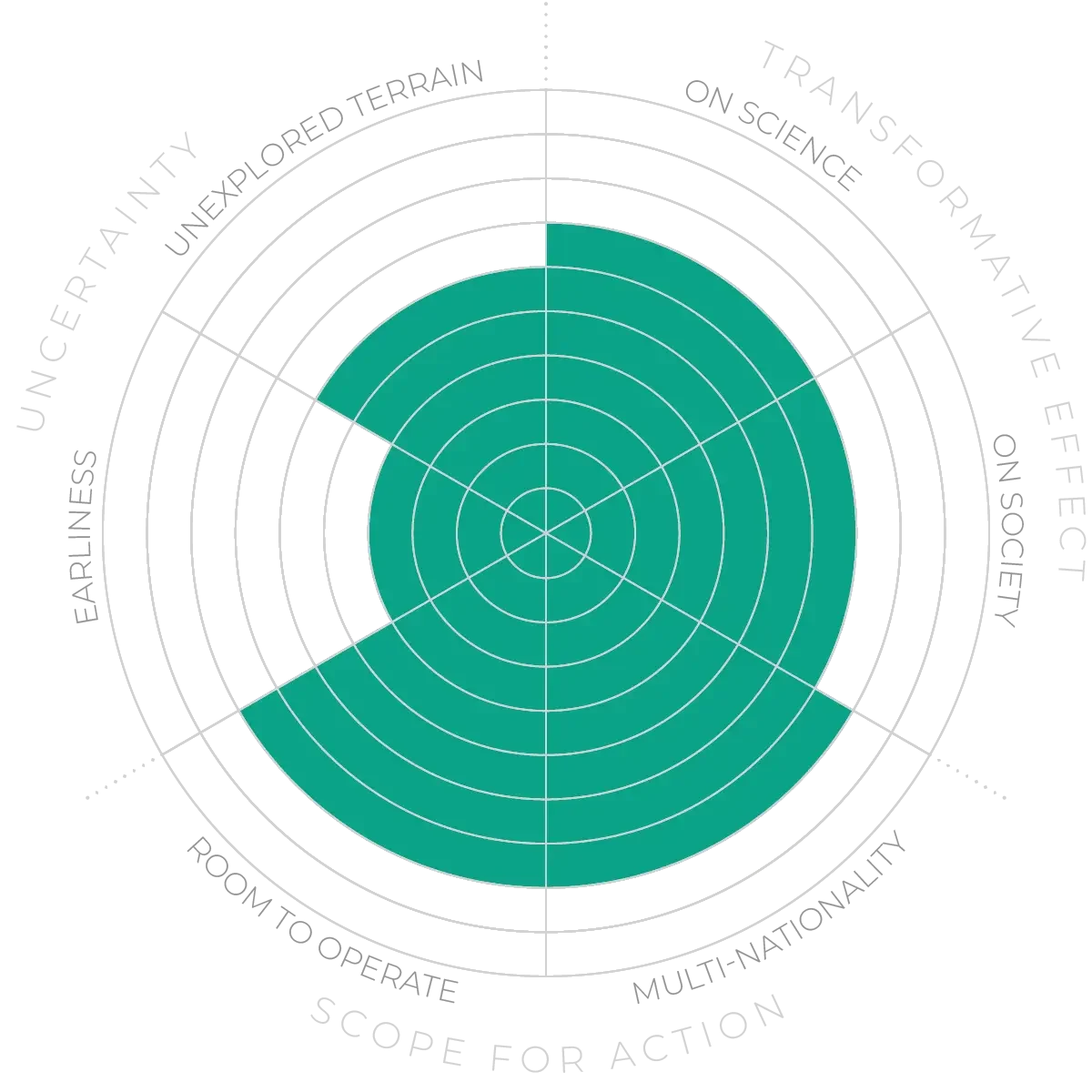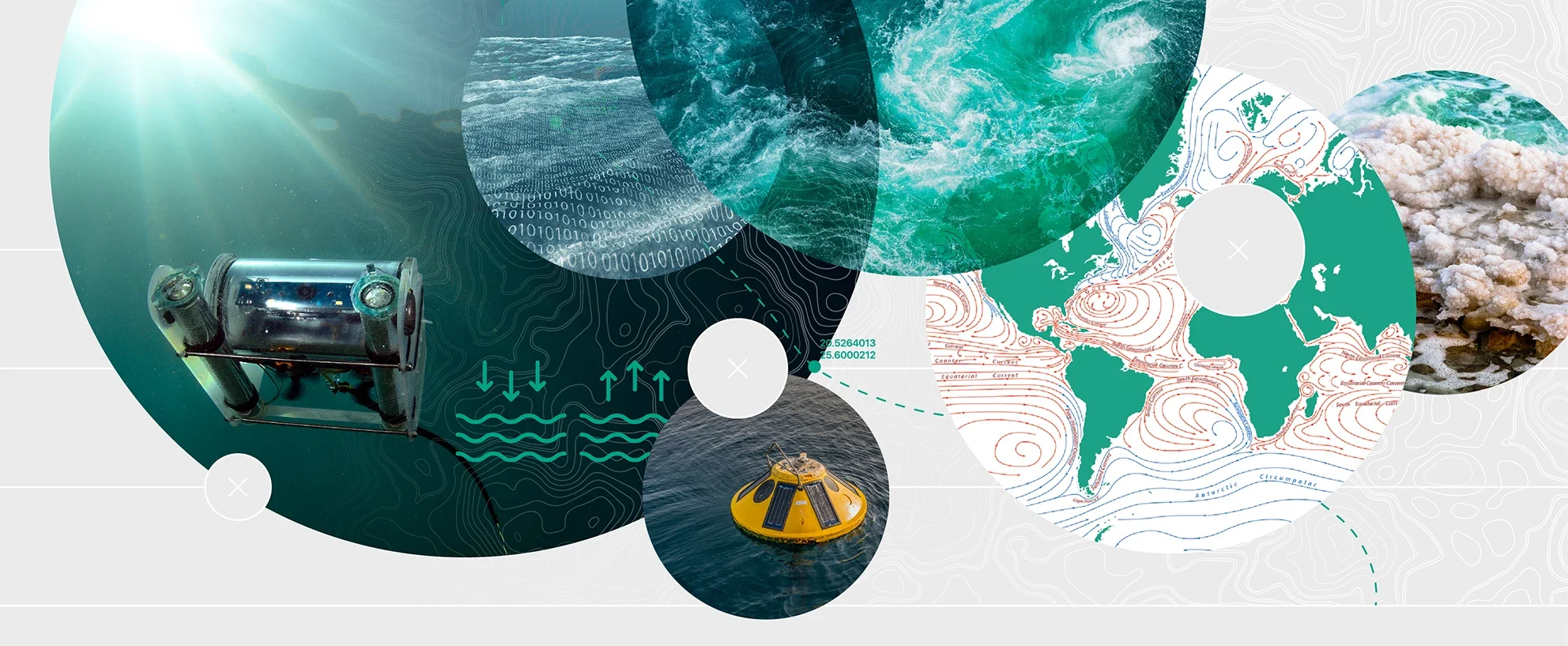Future Horizons:
10-yearhorizon
Remote sensing improves
25-yearhorizon
Data provides capacity to forecast major changes
For the first time we can track long-term changes. More heat is being transported into northerly waters, for instance.5 Currents are changing,6 with some slowing down or speeding up,7 and vast “gyres” shifting position.8 Ocean chemistry is also in flux: dangerous low-oxygen zones are growing.9 Researchers are now watching for evidence of tipping points,10,11 such as a slowdown or collapse of the Atlantic Meridional Overturning Circulation (AMOC),12 although timescales remain difficult to determine.
There is an urgent need for more data on the physical characteristics of the ocean, especially in the deep sea, which is constrained by gaps in our ability to gather data, whether using survey vessels, moored buoys, Argo floats or instruments tied to animals. If this situation can be improved by more scientific research as well as acquisition of data from commercial and military vessels (and through geochemical proxies that provide historical data, sometimes over million-year timescales), it may be possible (though this is still a subject of debate) to create a “digital twin” of the global ocean that is detailed enough to be useful in oceanographic prediction and intervention modelling.13
Oceanography - Anticipation Scores



